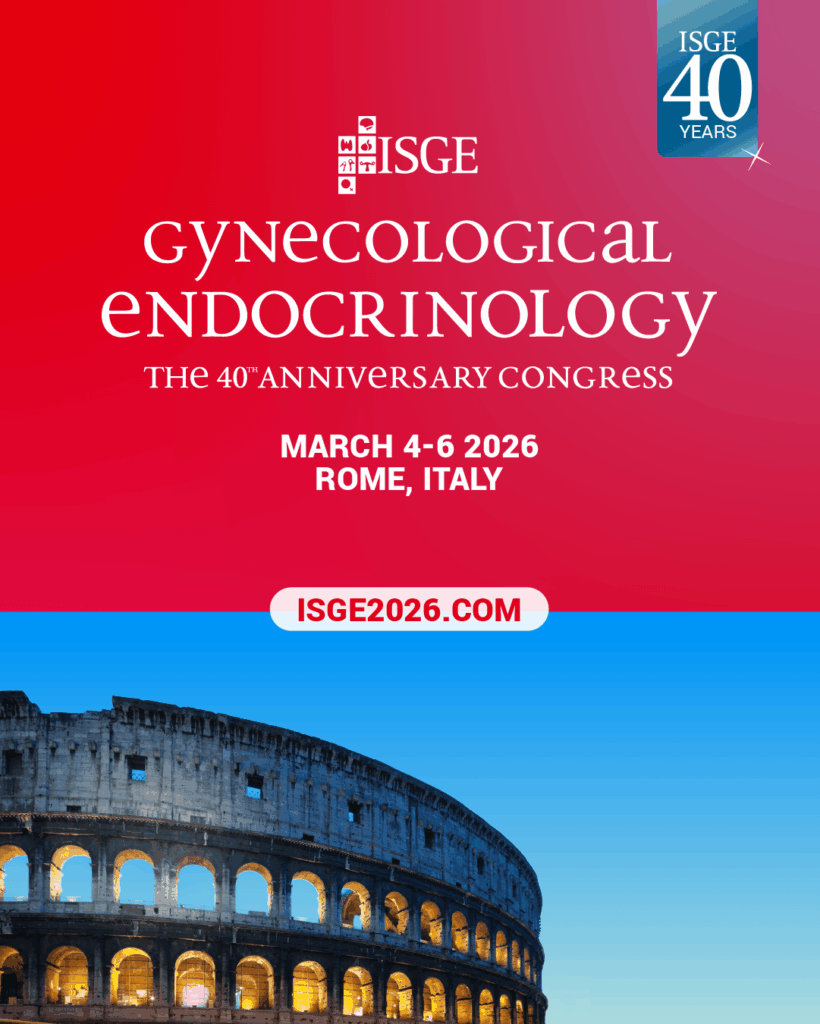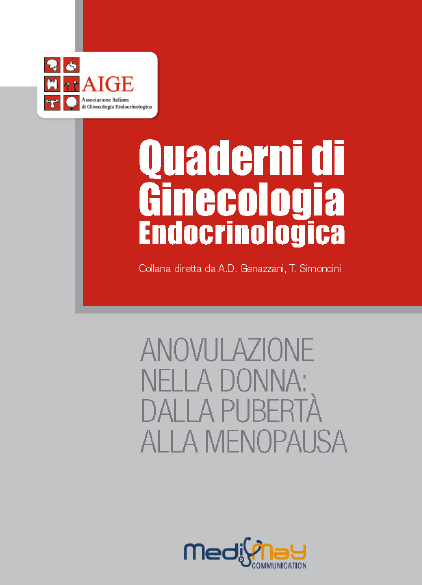-
Julian A. Gingold, Kelly Zafman, Jorge Rodriguez-Purata, Michael C. Whitehouse, Joseph A. Lee, Benjamin Sandler, Alan B. Copperman
Do elevated TSH levels predict early pregnancy loss in ART patients?
Gynecol Endocrinol, 2016; 32(12): 973–976Abstract
Introduction: The upper limit of normal TSH has been revised from 5 mIU/L to 2.5 mIU/L. We sought to evaluate IVF patients and the association between abnormal TSH and early pregnancy loss.
Methods: A retrospective study of patients who had TSH levels measured within the 2 weeks prior to their fresh autologous IVF cycles (2002–2014). Cohorts were stratified by oocyte age (<35, [35–38), [38–41), [41–43) and ≥43 years), and TSH level [(0–0.5], (0.5–2.5], (2.5–5], and (5–23) mIU/L]. Patients were followed until pregnancy loss or delivery. Model was assessed by chi-square of ANOVA with significance at p < 0.05. Results: TSH was abnormally elevated (>5 mIU/L), mildly elevated ((2.5–5] mIU/L) or suppressed (≤0.5 mIU/L) in 46, 317 and 65 of the 1201 total cycles, respectively. Treatment resulted in 630 pregnancies, 524 clinical pregnancies and 409 deliveries. Pregnancy loss rates were increased in patients ≥38 yo (p < 0.001) but not [35–38) yo (p = 0.40) compared with those <35 yo. Early pregnancy loss rate was not associated with TSH level (p > 0.30) compared with euthyroid patients after adjusting for oocyte age.
Conclusion: Early pregnancy loss rate in IVF patients appears to have no relation to recent TSH levels. -
Nadine M.P. Daan, Maria P.H. Koster, Regine P. Steegers-Theunissen, Marinus J.C. Eijkemans, B.C.J.M. Fauser
Endocrine and cardiometabolic cord blood characteristics of offspring born to mothers with and without polycystic ovary syndrome
Fertil Steril 2017;107:261–8Abstract
Objective – To compare the endocrine and cardiometabolic cord blood characteristics of offspring of mothers with polycystic ovary syndrome (PCOS) with those of healthy controls.
Design – Cross-sectional case control study.
Setting – University medical centers.
Patient(s) – Offspring from mothers with PCOS (n = 61) and healthy controls (n = 82).
Intervention(s) – Cord blood withdrawal from neonates.
Main Outcome Measure(s) – Cord blood estradiol, androstenedione, dehydroepiandrosterone sulfate (DHEAS), testosterone, sex hormone-binding globulin, free androgen index (FAI), insulin, total cholesterol, low-density lipoprotein cholesterol, high-density lipoprotein cholesterol, triglycerides, c-reactive protein, adiponectin, and leptin.
Result(s) – Androstenedione and leptin concentrations were increased in the offspring of women with PCOS compared with the controls: androstenedione median 2.9 (interquartile range [IQR] 2.3–3.9) nmol/L vs. 2.2 [IQR 1.6–2.7] nmol/L; and leptin median 13.6 [IQR 8.3–22.9] μg/L vs. 9.8 [IQR 6.0–16.5] μg/L. After adjusting for maternal and pregnancy-related confounders (such as maternal age, gestational age, birth weight), androstenedione appeared associated with PCOS in both male (relative change 1.36 [1.04; 1.78]) and female offspring (relative change 1.40 [1.08; 1.82]). Similarly, in male offspring the leptin concentrations appeared associated with PCOS after correction for confounders (relative change 1.55 [1.12; 2.14]). After correction for multiple testing, these associations attenuated.
Conclusion(s) – Observed results suggest that androstenedione concentrations are increased in the cord blood of male and female offspring of women with PCOS, although this requires confirmation. This finding would support the hypothesis that a maternal hyperandrogenic environment during pregnancy in women with PCOS may predispose their offspring to fetal hyperandrogenism. The potential associations between fetal hyperandrogenism and long-term health effects remain to be elucidated. -
Rebecca A. Feldman, Kathleen O’Neill, Samantha F. Butts, Anuja Dokras
Antimullerian hormone levels and cardiometabolic risk in young women with polycystic ovary syndrome
Fertil Steril 2017;107:276–81Abstract
Objective: To determine the association between antimullerian hormone (AMH) levels and metabolic syndrome (MetSyn) in young € women with polycystic ovary syndrome (PCOS).
Design: Cross-sectional study. Setting: Academic PCOS center.
Patient(s): A total of 252 women aged 18–46 years with PCOS.
Intervention: None.
Main Outcome Measure(s): Association of AMH with markers of cardiometabolic risk and MetSyn. Result(s): The median AMH level was 5.1 ng/mL (interquartile range [IQR] 3.0–8.1), and prevalence of MetSyn was 23.8%. AMH levels positively correlated with total T, high-density lipoprotein (HDL) cholesterol, and SHBG and negatively correlated with fasting glucose, homeostasis-model assessment of insulin resistance, body mass index (BMI), and systolic and diastolic blood pressure. A single-unit decrease in AMH was associated with an 11% increase in odds of MetSyn (odds ratio [OR] 1.11, 95% confidence interval [CI] 1.03– 1.20); the strength of this association was maintained in the multivariate model (OR 1.09, 95% CI 1.01–1.18) adjusting for age and race. Subjects with AMH values in the lowest tertile were twice as likely as those in the highest tertile to have MetSyn (adjusted OR 2.1, 95% CI 1.01–4.3). Total T was not associated with MetSyn or its individual components.
Conclusion(s): Our findings indicate that in young women with PCOS, low AMH levels predict a greater risk of MetSyn. The role of AMH, an established biomarker of ovarian reserve, in risk stratification of cardiometabolic risk in obese women with PCOS needs to be clarified in longitudinal studies and in the perimenopausal population -
Shirish S. Sheth, Anju R. Hajari, Chander P. Lulla, Darshana Kshirsagar
Sonographic evaluation of uterine volume and its clinical importance
J. Obstet. Gynaecol. Res. Vol. 43, No. 1: 185–189, 2017 DownloadAbstract
Aim – To compare patient characteristics, imaging and surgical management of mature cystic teratomas (MCTs) according to surgery type – elective versus emergent.
Methods – The study included surgeries performed between 1990 and 2016, during which histologically verified ovarian MCT material was obtained. The elective management group included surgeries performed at a pre-set date or incidental finding of MCT as part of a different surgery. Emergent surgeries were considered as such if performed as a result of suspected adnexal torsion.
Results – One hundred ninety two operations in which MCT was confirmed by histology were included: 136 elective, 56 emergent. The majority (88.5%) of study patients were of reproductive age. Patients in the emergent surgery group were significantly younger (27.5 ± 10.2 vs 36 ± 13.8 years, P < 0.001). Sensitivity for dermoid diagnosis was significantly increased among elective surgery patients (65.2% vs. 47.1%, P = 0.02). Laparoscopy was the preferred surgical mode in both study groups. Adnexal torsion was confirmed in 67.8% of emergent surgeries. Conservative surgery, including cystectomy with or without detorsion, was more commonly performed in emergent surgeries (91% vs. 72.7%, P = 0.006). Bilateral salpingo-oophorectomy with or without total abdominal hysterectomy was more commonly performed in elective surgery patients (22% vs. 3.5%, P = 0.001). Patient parity, mass size and white blood cell count were independently associated with adnexal torsion. Conclusions – Adnexal torsion is common among symptomatic patients with MCT and is related to mass size, patient age, past parity and white blood cell count. Most patients with MCT are of reproductive age and thus are treated with a minimally invasive approach. -
T. S. Mikkola, H. Savolainen-Peltonen, M. Venetkoski, O. Ylikorkala
New evidence for cardiac benefit of postmenopausal hormone therapyCLIMACTERIC, 2017 VOL. 20, NO. 1, 5–10Abstract
Coronary artery disease (CAD) is still the most common killer of western women. Coronary arteries, expressing estrogen receptors, are a target for estrogen action. Prior to the Women’s Health Initiative (WHI) study, postmenopausal hormone therapy (HT) was widely advocated for primary prevention of CAD, but such use was criticized after the WHI publication. However, new data accumulated in the USA and in Europe indicate that the use of estradiol-based HT regimens does not endanger the heart, but rather, it significantly reduces the incidence of CAD events and mortality. This effect may be related to the presence of hot flushes before HT initiation, because they may indicate a greater responsiveness of the cardiovascular system to HT. To get maximal cardioprotective efficacy of HT, a woman should initiate HT as soon as symptoms occur, and preferably within the first 10 postmenopausal years. Recent guidelines for optimal use of HT recommend pauses of HT at 1–2-year intervals to see whether hot flushes and other symptoms still persist. However, new data question the safety of this policy, because acute withdrawals of estradiol from the circulation may predispose to potentially fatal CAD events. All these data support modernized guidelines for optimal HT use.
-
C. A. Stuenkel
Menopause, hormone therapy and diabetesCLIMACTERIC, 2016 VOL. 20, NO. 1, 11–21Abstract
Over the past three decades, the prevalence of diabetes has increased four-fold. Coupled with the global obesity epidemic and aging of the world’s population, a perfect metabolic storm is brewing. The influence of menopause and exogenous estrogen and progestogens must be included in this equation. In this review, criteria for diagnosing diabetes and recommendations for screening are described. The reported effects of menopause on diabetes risk in healthy women are reviewed as well as the relationship between established diabetes and the timing of menopause. The effects of menopausal hormone therapies (MHT) on glucose control in women with diabetes and the effect of MHT on diabetes risk in menopausal women without diabetes are described. Evidence-based strategies to prevent diabetes in midlife women are highlighted. The augmenting effect of diabetes on chronic health concerns of aging women, such as cardiovascular disease, osteoporosis, and cancer, along with current recommendations for screening and prevention are presented. Given the current demographics of today’s world, the content of this review may apply to as many as one-third of the average practitioner’s postmenopausal patient population.
-
Jacques Donnez, Marie-Madeleine Dolmans
Uterine fibroid management: from the present to the futureHum Reprod Update (2016) 22 (6): 665-686Abstract
Uterine fibroids (also known as leiomyomas or myomas) are the most common form of benign uterine tumors. Clinical presentations include abnormal bleeding, pelvic masses, pelvic pain, infertility, bulk symptoms and obstetric complications.
Almost a third of women with leiomyomas will request treatment due to symptoms. Current management strategies mainly involve surgical interventions, but the choice of treatment is guided by patient’s age and desire to preserve fertility or avoid ‘radical’ surgery such as hysterectomy. The management of uterine fibroids also depends on the number, size and location of the fibroids. Other surgical and non-surgical approaches include myomectomy by hysteroscopy, myomectomy by laparotomy or laparoscopy, uterine artery embolization and interventions performed under radiologic or ultrasound guidance to induce thermal ablation of the uterine fibroids.
There are only a few randomized trials comparing various therapies for fibroids. Further investigations are required as there is a lack of concrete evidence of effectiveness and areas of uncertainty surrounding correct management according to symptoms. The economic impact of uterine fibroid management is significant and it is imperative that new treatments be developed to provide alternatives to surgical intervention.
There is growing evidence of the crucial role of progesterone pathways in the pathophysiology of uterine fibroids due to the use of selective progesterone receptor modulators (SPRMs) such as ulipristal acetate (UPA). The efficacy of long-term intermittent use of UPA was recently demonstrated by randomized controlled studies.
The need for alternatives to surgical intervention is very real, especially for women seeking to preserve their fertility. These options now exist, with SPRMs which are proven to treat fibroid symptoms effectively. Gynecologists now have new tools in their armamentarium, opening up novel strategies for the management of uterine fibroids
Abstract selezionati
-
Julian A. Gingold, Kelly Zafman, Jorge Rodriguez-Purata, Michael C. Whitehouse, Joseph A. Lee, Benjamin Sandler, Alan B. Copperman
Do elevated TSH levels predict early pregnancy loss in ART patients?
Gynecol Endocrinol, 2016; 32(12): 973–976 -
Nadine M.P. Daan, Maria P.H. Koster, Regine P. Steegers-Theunissen, Marinus J.C. Eijkemans, B.C.J.M. Fauser
Endocrine and cardiometabolic cord blood characteristics of offspring born to mothers with and without polycystic ovary syndrome
Fertil Steril 2017;107:261–8 -
Rebecca A. Feldman, Kathleen O’Neill, Samantha F. Butts, Anuja Dokras
Antimullerian hormone levels and cardiometabolic risk in young women with polycystic ovary syndrome
Fertil Steril 2017;107:276–81 -
Shirish S. Sheth, Anju R. Hajari, Chander P. Lulla, Darshana Kshirsagar
Sonographic evaluation of uterine volume and its clinical importance
J. Obstet. Gynaecol. Res. Vol. 43, No. 1: 185–189, 2017 Download -
T. S. Mikkola, H. Savolainen-Peltonen, M. Venetkoski, O. Ylikorkala
New evidence for cardiac benefit of postmenopausal hormone therapyCLIMACTERIC, 2017 VOL. 20, NO. 1, 5–10 -
C. A. Stuenkel
Menopause, hormone therapy and diabetesCLIMACTERIC, 2016 VOL. 20, NO. 1, 11–21 -
Jacques Donnez, Marie-Madeleine Dolmans
Uterine fibroid management: from the present to the futureHum Reprod Update (2016) 22 (6): 665-686






